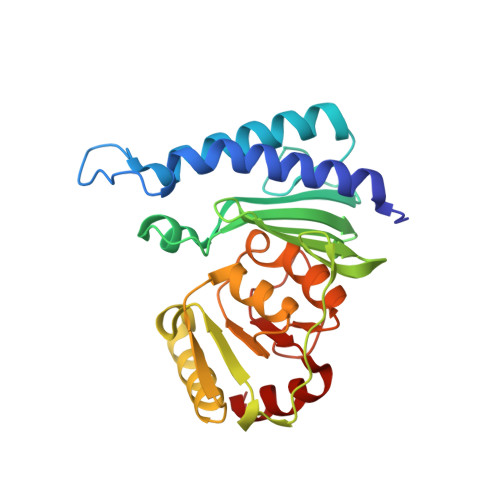Crystal structure of cbbF from Zymomonas mobilis and its functional implication
Hwang, H.J., Park, S.Y., Kim, J.S.(2014) Biochem Biophys Res Commun 445: 78-83
- PubMed: 24491569
- DOI: https://doi.org/10.1016/j.bbrc.2014.01.152
- Primary Citation of Related Structures:
4N81 - PubMed Abstract:
A phosphate group at the C1-atom of inositol-monophosphate (IMP) and fructose-1,6-bisphosphate (FBP) is hydrolyzed by a phosphatase IMPase and FBPase in a metal-dependent way, respectively. The two enzymes are almost indiscernible from each other because of their highly similar sequences and structures. Metal ions are bound to residues on the β1- and β2-strands and one mobile loop. However, FBP has another phosphate and FBPases exist as a higher oligomeric state, which may discriminate FBPases from IMPases. There are three genes annotated as FBPases in Zymomonas mobilis, termed also cbbF (ZmcbbF). The revealed crystal structure of one ZmcbbF shows a globular structure formed by five stacked layers. Twenty-five residues in the middle of the sequence form an α-helix and a β-strand, which occupy one side of the catalytic site. A non-polar Leu residue among them is protruded to the active site, pointing out unfavorable access of a bulky charged group to this side. In vitro assays have shown its dimeric form in solution. Interestingly, two β-strands of β1 and β2 are disordered in the ZmcbbF structure. These data indicate that ZmcbbF might structurally belong to IMPase, and imply that its active site would be reorganized in a yet unreported way.
Organizational Affiliation:
Department of Chemistry, Chonnam National University, Gwangju 500-757, Republic of Korea.















